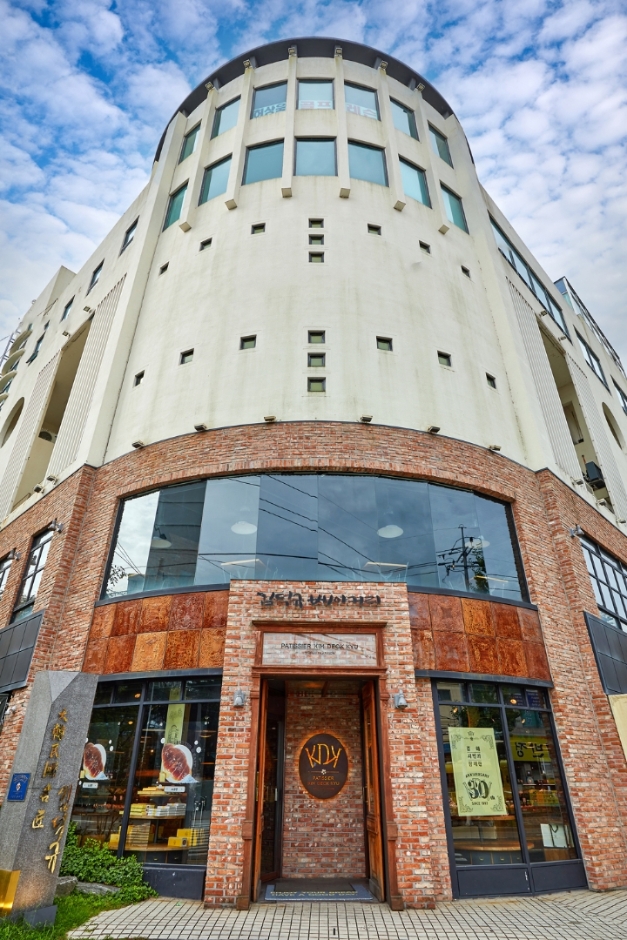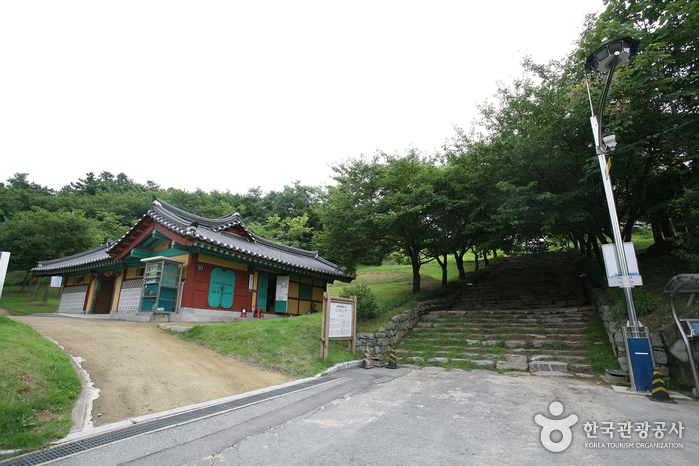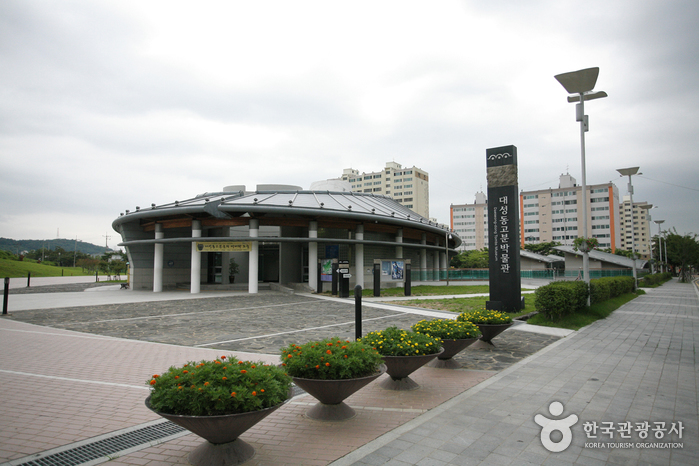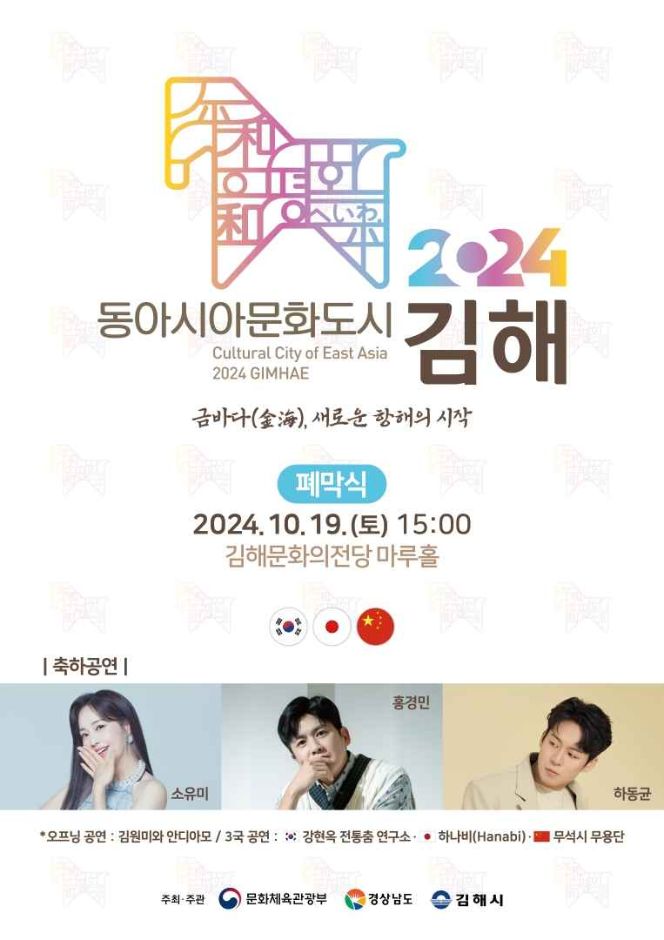Galaxy - Shinsegae Department Store Gimhae Branch [Tax Refund Shop] (갤럭시 신세계백화점 김해점)
16.9Km 2024-04-18
2232, Gimhae-daero, Gimhae-si, Gyeongsangnam-do
-
Shinsegae Department Store - Gimhae Branch [Tax Refund Shop] (신세계백화점 김해)
16.9Km 2024-04-23
2F Lotte Outlet Gwanggyo Branch, 10, Docheong-ro, Yeongtong-gu, Suwon-si, Gyeonggi-do
-
E-Mart - Gimhae Branch [Tax Refund Shop] (이마트 김해점)
16.9Km 2024-04-23
2F, 10, Docheong-ro, Yeongtong-gu, Suwon-si, Gyeonggi-do
-
Kim Deok-kyu Bakery (김덕규베이커리)
16.9Km 2024-01-24
20 Guji-ro, Gimhae-si, Gyeongsangnam-do
Founded by Kim Deok-kyu, who is a recognized confectionery master, this bakery becomes crowded with people as early as 8 a.m. when it opens. The bakery’s most popular item among a lot of different breads is garlic cream bread, which everyone buys at least once. It is the most delicious one in this bakery, made by cutting a long plain bread into pieces and filling them with garlic cream of sweet condensed milk and soft whipped cream. The coconut milk bun, combined with crunchy biscuits and sweet and soft coconut cream, is also its best-seller..
Archaeological Site in Bonghwang-dong, Gimhae (김해 봉황동 유적)
17.2Km 2020-04-03
50, Garak-ro 63beon-gil, Gimhae-si, Gyeongsangnam-do
+82-55-330-3934
In 1920, the Archaeological Site in Bonghwang-dong, Gimhae was the first site to be excavated in Korea. The site includes an important shell mound from the Gaya period, as well as the Bonghwangdae Tomb, which was the largest tomb in the Geumgwan Gaya area. These important discoveries lead to the designation as Historical Site No. 2 on February 5, 2001. On top of the hill remain Yeouijangja Pavilion and Hwangsebawi Rock, which are part of the legend about General Hwangse and Yeoui.
Museum of the ancient tombs in Daseong-dong (대성동고분박물관)
17.3Km 2023-01-02
126, Gayaui-gil, Gimhae-si, Gyeongsangnam-do
+82-55-350-0401
The Museum of the ancient tombs in Daseong-dong displays artifacts unearthed from the four excavations of the Daeseongdong Tumuli. Highlighting often overlooked relics of the Geumgwan Gaya, the museum has three ground-floor exhibit halls and several underground auxiliary facilities. The main exhibits include a life-sized statue of a mounted soldier and a warrior statue, both recreated based on bones excavated from the tumuli of Yean-ri. The museum relies heavily on videos and dioramas to help visitors explore all the museum has to offer.
Gimhae Arts and Sports Center (김해문화의전당)
17.4Km 2022-12-29
2060, Gimhae-daero, Gimhae-si, Gyeongsangnam-do
+82-55-320-1234
The Gimhae Arts and Sports Center is a performance hall for high-class performances. Maru Hall is a multi-purpose theater that also contains a moving orchestra shell with a sound reflection board for a smaller concert hall inside the theater. Nuri Hall is an experimental theater for performances in a variety of themes. The center also features the outdoor theater Aedureum Madang, Yunseul Art Gallery, Media Center, Sports Center, and Aram Learning Center, as well as a café and restaurants.
Culture City of East Asia Gimhae (동아시아문화도시 김해)
17.4Km 2024-10-18
2060 Gimhae-daero, Gimhae-si, Gyeongsangnam-do
+82-51-781-2437
The Culture City of East Asia is an agreement to promote diverse cultural exchanges between Korea, China, and Japan. Under the value of respect for cultural diversity among Korea, China, and Japan, each year one city from each country is designated as a “Culture City of East Asia” to practice the spirit of “East Asian consciousness, cultural exchange and convergence, and understanding of other cultures.” (Source: Culture City of East Asia website)
Ancient Tombs in Daeseong-dong, Gimhae (김해 대성동 고분군)
17.4Km 2020-04-02
126, Gayaui-gil, Gimhae-si, Gyeongsangnam-do
+82-55-330-3934
The tumuli in Daeseong-dong, located to the east of the Royal Tomb of Kim Suro, reflect the formation and development of the Gaya Era. The Daeseong-dong Tumuli are located in the center of the shell mounds of Hoehyeon-ri, the location of the founding of the Gaya Kingdom according to local legend.
The tumuli relics were excavated by researchers from the Kyungsung University Museum from 1990 to 1992 and were found to be the common burial ground of the dominant class of the Gaya Kingdom. On the hilltops, which were viewed as prime burial places, are the tombs of kings and rulers; on the slopes are the tombs of the lower classes.
A total of 136 tumuli were found in the Daesong-dong area. Further investigation of the tumuli revealed several important and interesting facts. First, from the end of the third century, men and horses were buried alive along with the dead. Also, weapons were bent and buried as well, with many of these artifacts being unearthed among the tumuli. Other materials found in the tumuli such as cylindrical bronze items, pinwheel-shaped bronze items, and jasper items showed that Gaya was involved in trade with Japan. The Daeseong-dong Tumuli is significant in that it gives a glimpse into the political and social structure of the Gaya Kingdom, and the cultural exchange between Korea, China, and Japan.
Mh Modern House - Homeplus Gimhae Branch [Tax Refund Shop] (MH 모던하우스 홈플러스김해)
17.4Km 2024-04-23
2078, Gimhae-daero, Gimhae-si, Gyeongsangnam-do
-
![Galaxy - Shinsegae Department Store Gimhae Branch [Tax Refund Shop] (갤럭시 신세계백화점 김해점)](http://tong.visitkorea.or.kr/cms/resource/38/2885938_image2_1.jpg)
![Shinsegae Department Store - Gimhae Branch [Tax Refund Shop] (신세계백화점 김해)](http://tong.visitkorea.or.kr/cms/resource/62/2885962_image2_1.jpg)
![E-Mart - Gimhae Branch [Tax Refund Shop] (이마트 김해점)](http://tong.visitkorea.or.kr/cms/resource/33/2885933_image2_1.jpg)





![Mh Modern House - Homeplus Gimhae Branch [Tax Refund Shop] (MH 모던하우스 홈플러스김해)](http://tong.visitkorea.or.kr/cms/resource/56/2885956_image2_1.jpg)
 English
English
 한국어
한국어 日本語
日本語 中文(简体)
中文(简体) Deutsch
Deutsch Français
Français Español
Español Русский
Русский